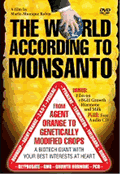IMMIGRATION’S ONSLAUGHT: HUMAN RESISTANCE AND CONSTRAINTS
By Frosty
Wooldridge
September 8, 2011
NewsWithViews.com
As our immigration dilemma accelerates, the picture clarifies for every American. Clint Eastwood as Dirty Harry in “Magnum Force” said, “A man’s got to know his limitations.”
The same stands for a family, a community, state and country. Everything on this planet exists within limits. A glass of water can only hold as much as it can hold. Only nine players can play on defense on a baseball team on the field at one time. Basketball limits a team to five players. A movie theater holds a limited amount of seating. A plane with a 200 passenger limit must carry exactly that number and not one extra.
David Pimentel, Cornell University, January 4, 2007, said in a speech “Like it or not, our natural resources, from land to wood to oil to water, are finite and cannot sustain an infinite growth without seriously impacting our quality of life. The time has come for government planners and citizens alike to begin weighing the impacts of unabated growth.”
Pimentel added, “More than 99 percent of all our food comes from the land and less than one percent from the oceans and other aquatic ecosystems. Each American consumes more than 2,200 lbs of food per year, and to produce this food requires more than 3.6 acres of agricultural land. Most U.S. cropland is now in production and little is available for expanding food production.”
As noted earlier, each added American destroys 19.4 acres of land to support him or her throughout life.
“Along with land, an ample supply of freshwater is essential for food and other human needs,” Pimentel said. “Water shortages already exist in many parts of the nation, especially in western and southern states—and such shortages will become more acute if growth continues unabated. Each American uses about 530,000 gallons of water per year, with about 80 percent used just for food production. For example, an acre of corn requires 500,000 gallons of water during the growing season.”
Pimentel added, “More than 90 percent of U.S. oil reserves have already been pumped, and currently more than 63 percent of U.S. oil has to be imported from other nations at a cost of more than $120 billion per year. Yearly, each American uses energy in the equivalent to 2,800 gallons of oil, with 500 gallons devoted just for food production.
“Fossil energy is a non-renewable resource, which means that Americans will require renewable energy sources in the future. Depending on the geographic region, the renewable energy technologies with the greatest potential are photo-voltaics, hydropower, wind energy, biomass (thermal), solar thermal, and passive solar. Yet, even when all solar-based technologies become operational, they are expected to provide only half of the current U.S. energy consumption. These renewable energy technologies will require about 17 percent of U.S. land area for their production—and this is equal to current cropland area in use.”
The U.S. produces 4.5 billion gallons of ethanol per year. This uses 18 percent of the U.S. corn crop but the yield represents only one percent of U.S. petroleum use. If 100 percent of U.S. corn were used, the estimated ethanol yield would provide only about six percent of U.S. petroleum needs. As mentioned earlier, ethanol as a viable alternative remains a fantasy.
“The continued expansion is depleting fossil fuels, it is reducing the numbers of native species of plants, animals, and microbes throughout the U.S., many of which are vital to agricultural production processes, such as pollination, and essential for a quality environment,” Pimentel said. “Converting land to development and highways takes away valuable cropland acreage. For example, in California 240,000 acres of farmland was lost during last year to development.”
Pimentel added, “Highway construction also destroys many thousands of acres of natural habitat for survival of native species. Nearly four million miles of highways cover our land. The area being blacktopped each year is 1.3 million acres (an area equal to the State of Delaware). No species lives under the blacktop. Rapid, unabated population growth, including legal and illegal immigration, stresses our school systems. Some schools have three times the number of students that they can handle with the available teachers and support staff. Overall this lowers our effectiveness of the education system, which in turn reduces the economic viability and competitiveness of the United States in the global market.”
Though we feel immune from our accelerating immigration crisis, it manifests in every sector of our society. “Similarly, the rapid expansion is crowding medical facilities in the United States,” Pimentel said. “In the past two decades the number of outpatients in hospitals has increased more than two fold, and continues to increase. Some hospitals have been forced to close due to the pressure on their emergency and outpatient facilities.”
In California, that number exceeds 86 hospitals and ER wards that suffered closing via bankruptcy in the past five years. California houses upwards of four million illegal aliens and over 10 million legal immigrants.
| Subscribe to the NewsWithViews Daily News Alerts! |
“Rapid expansion in the United States is challenging our food production system, the economy in general, and the environment,” Pimentel said. “As humans and their diverse activities expand, the sustainability of the natural environment is threatened and diminished for the future. We, as a nation, must come to grips with the harsh reality that our land, energy, food and water are finite. The quality of life for us, and especially for our children and future generations, is closely linked to the number of people who live in our 50 states.” Professor David Pimentel, College of Agriculture and Life Sciences, Cornell University, Ithaca, New York.
Tell me, honestly that you’re excited about adding 75 million immigrants to this country by 2035. Give me one good reason.
Listen to Frosty Wooldridge on Wednesdays as he interviews top national leaders on his radio show "Connecting the Dots" at www.themicroeffect.com at 6:00 PM Mountain Time. Adjust tuning in to your time zone.
� 2011 Frosty Wooldridge - All Rights Reserved













 Share
This Article
Share
This Article








